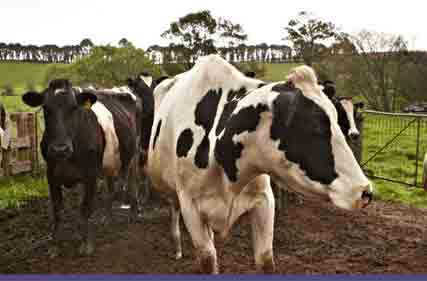 Modest growth in milk production, generally favourable seasonal conditions and contained input costs all point to the Australian dairy industry entering a recovery phase, according to the latest Situation and Outlook report from Dairy Australia.
Modest growth in milk production, generally favourable seasonal conditions and contained input costs all point to the Australian dairy industry entering a recovery phase, according to the latest Situation and Outlook report from Dairy Australia.
Dairy farmers in the southern export-focused states (Victoria, Tasmania and South Australia) have experienced relatively favourable weather conditions, and many have been able to cut costs through the difficult 2016/17 season, as reflected in the latest Dairy Farm Monitor Project (DFMP) results.
Dairy Australia Senior Analyst, John Droppert, said the results reflect the reality of a volatile past 12 months for the industry.
“2016/17 was undoubtedly a tough season for cash flow but the ability of farmers to adapt, together with generally lower hay and grain costs and better weather conditions, has helped many to generate a more positive financial result than they may have anticipated.”
Results from the DFMP show a similar, or slightly improved earnings before interest and tax (EBIT) compared to the previous 12 months.
Mr Droppert noted that whilst EBIT results were better than the previous season, many farm businesses would be using any surplus cash for debt reduction or expenses incurred from last season.
Despite the lowest milk price received in the history of the DFMP, 89 per cent of farmers recorded a positive return on assets as favourable seasonal conditions and pasture growth reduced feed costs, helping to offset the low milk price.
The report also found 89 per cent of surveyed farmers were optimistic for the 2017-18 season with the majority of participant farmers predicting an improvement in farm business returns.
In the broader context, dairy market settings remain supportive of a gradual recovery.
Internationally, commodity prices reflect a relatively balanced supply and demand situation, changing little over the past few months.
Butter prices are near record levels, whilst skim milk powder values continue to be suppressed by the large volumes held in European public storage.
Most other products remain somewhere closer to ‘average’, and the combination of reasonable demand and re-emergent supply suggest they are likely to remain so.
Based on the combination of contained input costs and the modest improvements seen in farmgate milk prices, growth in milk volumes is expected in southern regions.
“Dairy Australia’s forecast for 2017/18 milk production remains a growth range of between 2 and 3% on the 2016/17 total of 9.02 billion litres. This implies a forecast total of around 9.2 billion litres for 2017/18,” Mr Droppert said.
